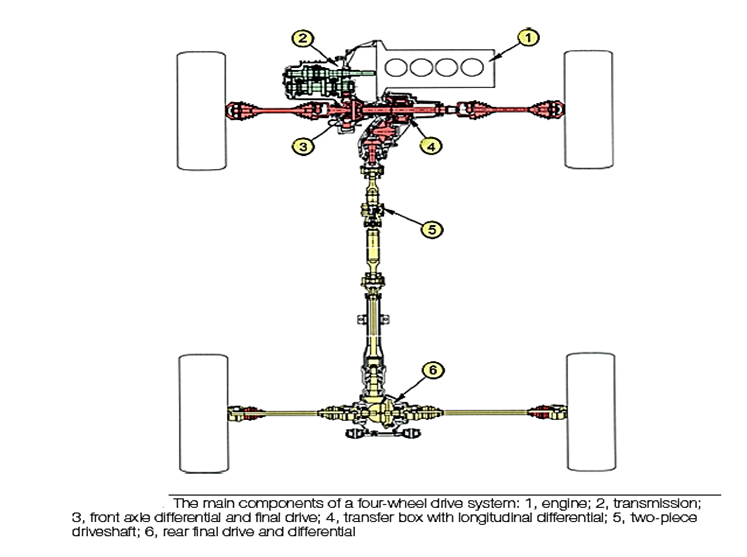SKEDSOFT
Introduction:
Four-wheel drive (4WD) systems can be described as part-time or full-time. All 4WD systems must include some type of transfer gearbox.
Components of 4WD:

- Each axle must be fitted with a differential. A transfer box takes drive from the output of the normal gearbox and distributes it to the front and rear.
- The transfer box may also include gears to allow the selection of a low ratio. High ratio is a straight-through drive. A 4WD system, when described as part-time, means that the driver selects 4WD only when the vehicle needs more traction. When the need no longer exists, the driver reverts to the normal two-wheel drive.
- This keeps driveline friction, and therefore the wear rate, to a minimum. When a 4WD system is described as full-time, it means that the drive is engaged all the time.
- To prevent ‘wind-up’, which occurs if the front and rear axles rotate at different speeds, a centre differential or viscous drive is used. An all-wheel drive (AWD) system automatically transfers drive to the axle with better traction
It is designed for normal road use. The drive, on fulltime systems, is passed to the rear via a viscous coupling. When the front wheels spin, the viscous coupling locks and transfers drive to the rear. If used, a transfer box on a part-time 4WD system may allow the driver to choose from four options:
- Neutral
- 2WD high
- 4WD high
- 4WD low
Four-wheel drive systems use a combination of propshafts and driveshafts together with viscous couplings and transfer boxes. A number of variations are possible and may be described as full- or part-time.